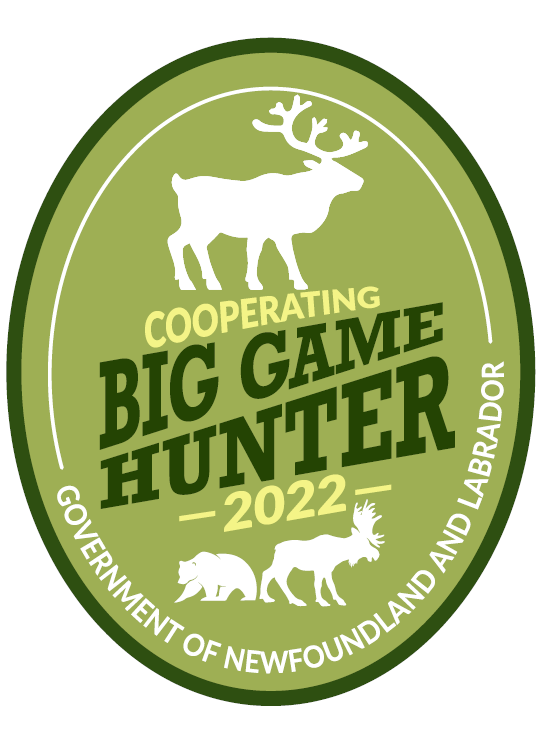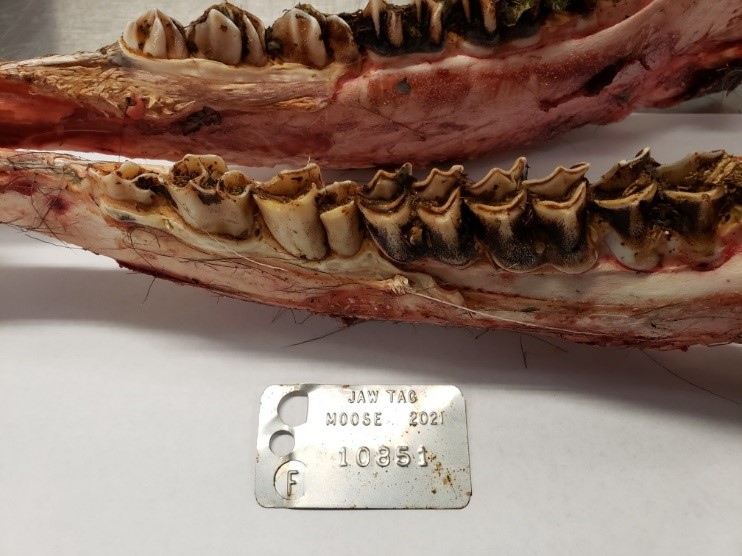Moose/Caribou Jawbone Collection Program
Successful big game hunters will be required to submit the lower jawbone of a moose or caribou that has been harvested under their licence. A jawbone tag will be included in your big game licence package. Please indicate the sex of the animal you have harvested on the tag. Jawbone drop boxes will be established in 48 locations throughout the province. To view all locations on a map, click here.
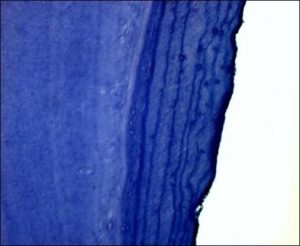
Wear aging estimates age based on the visible wear of the molar teeth. Cementum age interpretation involves counting the layers of bony material deposited each year on the root of the tooth. These layers appear like rings on a tree as depicted below. Incisor teeth, which are extracted from the lower jawbone and analyzed, give us an accurate age. Knowing the age structure of animals can help determine the health and status of the population. For example, hunters often harvest yearling and two-year old moose, while few calves and old animals are harvested. Other than calves, the age distribution is assumed to resemble the age of the moose population. If there are many young and prime breeding animals present, the population is probably increasing. If there are many older animals, it is likely that birth rates are low and the population is declining.
When you submit your jawbones, please keep the following in mind:
-
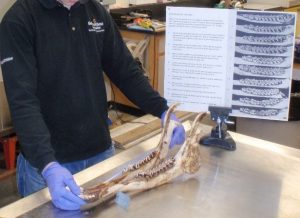
A properly cleaned jawbone is important for getting accurate measurements. A properly cleaned jawbone is important for getting accurate measurements.
- Remove as much skin and flesh as possible.
- Keep in a well-ventilated, cool area.
- Do not wrap in plastic to avoid the growth of bacteria.
- Firmly attach the jawbone tag before submitting, and remember to punch out the tab that indicates the sex of the animal harvested.
- Samples should not be mailed.
This photo is a moose jawbone received at the wildlife laboratory during Fall 2021. The animal is a yearling indicated by the tooth eruption pattern. The hunter has also indicated that a male has been harvested by punching out the correct tab on the jawbone tag. Please punch out the sex of your harvest.
Bear Premolar Collection Program
Please submit premolar teeth from your harvested black bears.
Beginning in fall 2022, the Wildlife Division is requesting successful black bear hunters submit the upper premolar teeth from harvested bears.
- The information from the collection will help form management decisions, evaluate black bear populations and hunting trends, and provide insight on the age structure and reproductive success of bears in our province.
- Similar to obtaining the age from moose and caribou, black bears are aged using cementum analysis by microscope examination. The layers of cementum (bony material) deposited each year on the root of a tooth, like rings in a tree, are counted. Additionally, for female bears reproductive success can also be evaluated as a double band of cementum is laid down during cub years
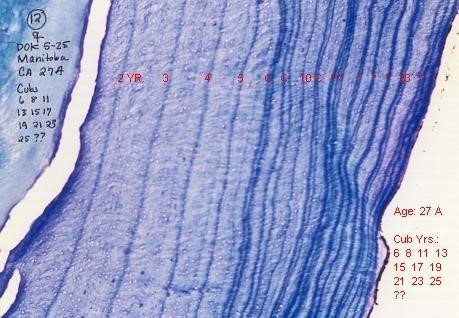
How to submit premolar teeth?
- Fill out all information on the Cooperating Black Bear Hunter Tooth Submission Form found with your bear license. A printable copy can be found here.
- Please send your completed sheet with teeth in the envelope provided with your licence to: Wildlife Division Laboratory, Department of Fisheries, Forestry and Agriculture, 120-132 Main Street P.O. Box 280, Pasadena, NL.
- Tape dry premolar teeth to the submission form and place in the envelope found with your black bear license. Place the envelope in the mail.
- Video instruction are available here.
- Cooperating hunters will receive a “Cooperating Big Game Hunter” crest as well as an age report for your harvested bear(s).
DO NOT SUBMIT BEAR SKULLS OR BEAR JAWBONES: PLEASE SUBMIT PREMOLAR TEETH ONLY AS SKULLS WILL BE DISCARDED.
Please collect the upper premolar teeth (see pictures)
If you can’t find the upper premolars, collect the lower jaw premolars
1) The premolar teeth we need are the very small teeth immediately behind the upper and lower canine teeth (see pictures).
2) Extraction is easily done just after the bear has been harvested when the jaw is still pliable. Use a screwdriver or knife blade to push the gum down and away from the tooth.
3) Gently loosen the tooth by slowly rocking back and forth. Pull the tooth out with pliers or pry it out using the canine as a lever.
Be careful not to break the tooth off at the gum line, the whole tooth, including the root, is needed for age interpretation.
4) If you break the root of an upper premolar or these teeth are gone or cannot be extracted, please try the lower premolars located immediately behind the lower canine.
Please call the wildlife division laboratory at 709 686 5546 or email wildlifelab@gov.nl.ca for help if required
Removing these teeth and cutting into the gum does not impact taxidermy work or your mount.
Results
Hunters that cooperated during the 2020-21 Island Moose Season enabled the collection of the information represented in this graph. For calves and yearlings (Class I), the pattern of eruption and presence of milk teeth (baby teeth) provide an accurate age. Those Class II or higher must be cementum age interpreted to obtain an accurate age.
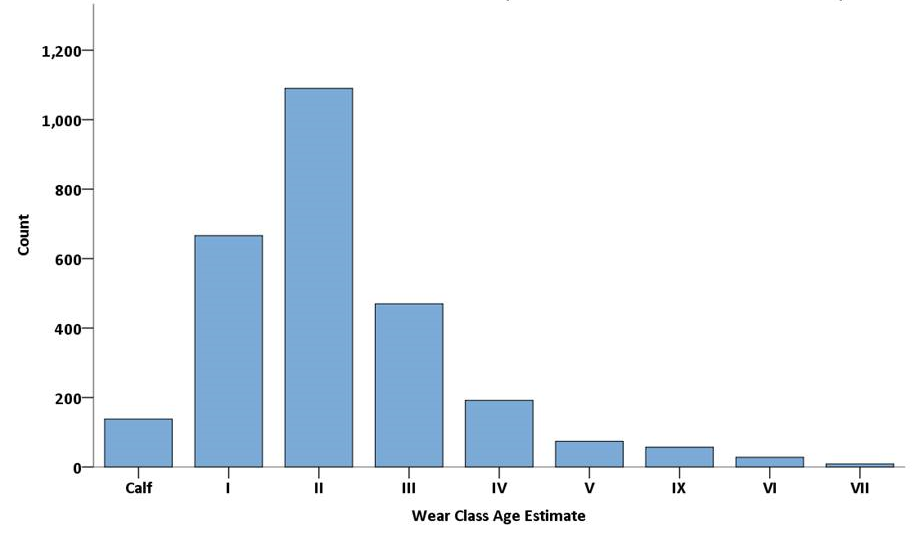
The greater the participation in these programs the more accurate estimates become. The graph below shows the estimated harvest for moose management areas and the jawbone return rate for the 2020-21 hunting season. The solid line shows that the average return rate of moose jawbones was 21%. The dashed line shows our intended goal of a 30% average return.
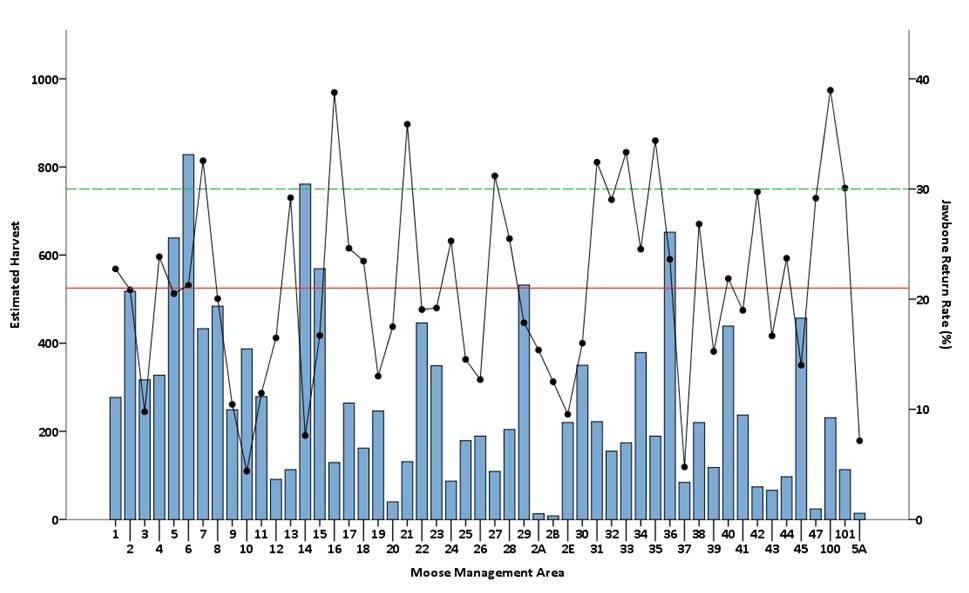
Cooperating Big Game Hunter Crests
Hunters that submit a lower jawbone from a harvested big game animal will receive a cooperating big game hunter crest as a token of appreciation (partner licences will receive two crests). The efforts of hunters to supply data through jawbone submissions are essential to establish the health and status of moose and caribou populations throughout the province. Thanks to hunting public, age and growth records in the provincial jawbone database represent one of the largest datasets known among North American wildlife management agencies, amassing over 173,000 entries.
